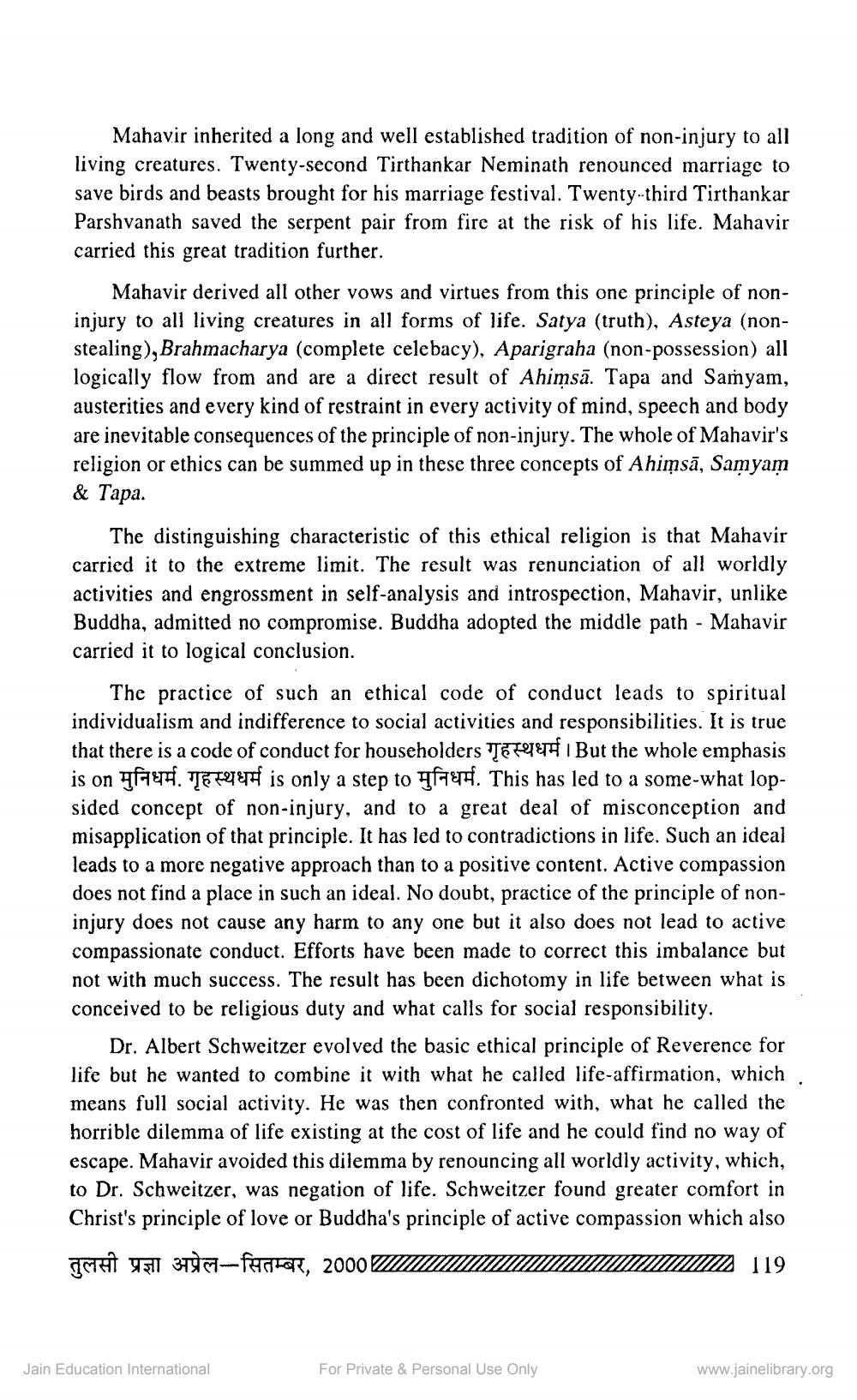________________
Mahavir inherited a long and well established tradition of non-injury to all living creatures. Twenty-second Tirthankar Neminath renounced marriage to save birds and beasts brought for his marriage festival. Twenty-third Tirthankar Parshvanath saved the serpent pair from fire at the risk of his life. Mahavir carried this great tradition further.
Mahavir derived all other vows and virtues from this one principle of noninjury to all living creatures in all forms of life. Satya (truth), Asteya (nonstealing),Brahmacharya (complete celebacy), Aparigraha (non-possession) all logically flow from and are a direct result of Ahimsā. Tapa and Samyam, austerities and every kind of restraint in every activity of mind, speech and body are inevitable consequences of the principle of non-injury. The whole of Mahavir's religion or ethics can be summed up in these three concepts of Ahimsā, Samyam & Tapa
The distinguishing characteristic of this ethical religion is that Mahavir carried it to the extreme limit. The result was renunciation of all worldly activities and engrossment in self-analysis and introspection, Mahavir, unlike Buddha, admitted no compromise. Buddha adopted the middle path - Mahavir carried it to logical conclusion.
The practice of such an ethical code of conduct leads to spiritual individualism and indifference to social activities and responsibilities. It is true that there is a code of conduct for householders TE TEETH I But the whole emphasis is on मुनिधर्म. गृहस्थधर्म is only a step to मुनिधर्म. This has led to a some-what lopsided concept of non-injury, and to a great deal of misconception and misapplication of that principle. It has led to contradictions in life. Such an ideal leads to a more negative approach than to a positive content. Active compassion does not find a place in such an ideal. No doubt, practice of the principle of noninjury does not cause any harm to any one but it also does not lead to active compassionate conduct. Efforts have been made to correct this imbalance but not with much success. The result has been dichotomy in life between what is conceived to be religious duty and what calls for social responsibility.
Dr. Albert Schweitzer evolved the basic ethical principle of Reverence for life but he wanted to combine it with what he called life-affirmation, which
social activity. He was then confronted with, what he called the horrible dilemma of life existing at the cost of life and he could find no way of escape. Mahavir avoided this dilemma by renouncing all worldly activity, which, to Dr. Schweitzer, was negation of life. Schweitzer found greater comfort in Christ's principle of love or Buddha's principle of active compassion which also
TAHT Wl 37871-fcae, 2000 VNN
W
119
Jain Education International
For Private & Personal Use Only
www.jainelibrary.org




